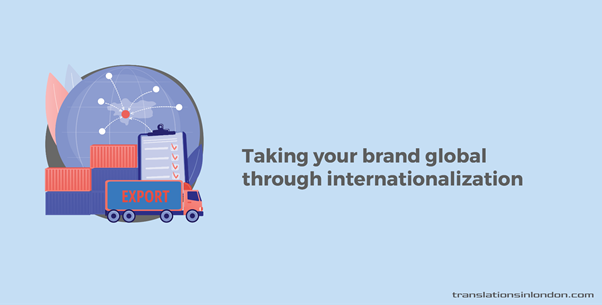
Businesses attempt to go global for many reasons.
Some do it to capture additional market share, while others venture into the global scene to take advantage of unique opportunities.
Irrespective of the reason, creating a global product requires a lot of planning and research in order to be culturally appropriate by catering to diversity within individual markets (through localization). But at the same time, your product has to be designed to meet user needs in many regions (Internationalization). The latter primarily involves creating a product one can easily modify.
In this blog post, we explore the global expansion journey and how internationalization helps facilitate this process.
The global expansion journey
For most enterprises, global expansion almost seems like an inevitable event waiting to happen. But what does it really entail?
Well, we like to look at it from two perspectives; the external scene and the internal. The former comprising components like; import regulations, local trade policies, distribution ecosystem, etc., while the latter involves the product, advertisement, messaging, branding and others.
Skillfully navigating these components and how they affect one another is oftentimes crucial to a successful global expansion story, but for the sake of this article, we want to limit our scope to the internal perspective of the expansion journey.
Why do you need to internationalize?
Simply put, internationalization makes your brand’s global expansion more efficient. If done in the early stages of your global expansion, internationalization saves you valuable time and resources, especially if a decent portion of your resources are going toward re-adapting your platform for another market.
It is particularly significant when you have digital products like; a web platform or software. While developing your software, for instance, you should adopt a universal format for your UI elements to allow room for variation in text size in the event when you are adding more languages to your platform.
This singular action makes it faster to deploy updates across regions without anyone feeling left out, thus improving the user experience, which we covered in a previous post.
The same applies to non-digital products. Internationalization helps develop content and messages that brands can easily translate without any significant meaning lost during translation. It could involve using simplistic and culturally neutral language that has global application, which makes the adaption process to other languages easy and free from controversies.
A good blend of localization and internationalization could lead to global success.
Internationalization, if well-executed, makes re-adapting your platform or content seamless and ready for the next phase of your global journey. The next phase being localization.
It is worthy to point out that by general definition, l10n and i18n are polar opposites that work in unison to deliver a globalized product with a smooth user experience, as one does not function adequately without the other.
While internationalization could be one-off, we cannot say the same for localization, since brand’s need to continue to adapt their various strategies based on consumer feedback in order to get the best results.
Case Study: Netflix’s Global Success
After making significant headway in its local (American) market, Netflix set its sight on the global scene, setting out for international expansion in 2010 first into Canada and Latin American, then later, Europe.
Netflix present success is most likely down to user experience, which it continuously attempts to localize. Besides creating local content for its diverse audiences, it goes one step further to creating translations and dubbed version of most of its shows.
An indication of Netflix’s focus on users experience is their internationalization’s team creation of Shakespeare, which is a tool that facilitates collaboration between their content designers, copywriters, language managers etc., to deliver a platform experience that brings the best conversion.
The bottom line
Although many brands think of global expansion as an excruciating endeavour, it doesn’t really have to be that way if proper planning and the initial groundwork transpires. A great way to develop your platform/content for global expansion is starting out with internationalization and then subsequently localizing to deliver the best experience for your consumers. Internationalization improves efficiency by making subsequent expansion to other regions happen in a faster and cost-effective manner.
TranslationsinLondon offers superb translation and localization services that make your global expansion journey easier and a lot faster.
Reach out to us today to find out how our localization services can help you build an exceptional platform for any market.